Electric Vehicles Initiative
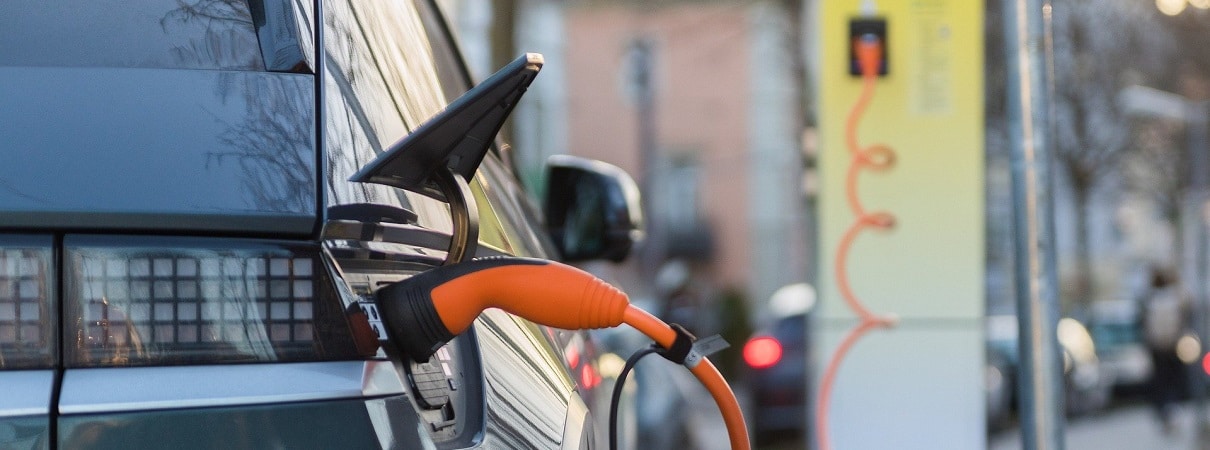
Goal

Some of the key goals of the Clean Energy Ministerial’s Electric Vehicles Initiative include:
- Strengthen the understanding of the opportunities offered by electric mobility to meet multiple policy goals.
- Improve awareness of the drivers of EV deployment, supporting country-level policy and regulatory implementation.
- Outline a vision for the future of electric mobility, building consensus on policy goals (e.g. EV30@30) and benchmarking success.
- Bolster policy action and improve the visibility of national policy efforts in publications, such as the Global EV Outlook
- Mobilize targeted policy action and strengthening the impact of specific measures.
- Accelerate the geographical coverage of policy deployment on electric mobility through capacity building and sharing knowledge and experiences, accelerating learning, and specific activities such as the EVI Global Pilot Cities Program.
Overview
The Electric Vehicles Initiative (EVI) is a multi-government policy forum dedicated to accelerating the introduction and adoption of electric vehicles worldwide. In 2010, EVI was one of several initiatives launched under the CEM.
Electrifying the global vehicle fleet is a key component of the CEM’s goal of enhancing the use of clean energy. Vehicle electrification makes transportation more energy efficient, reduces greenhouse gas emissions and oil dependence, and improves local air quality. Electric vehicle charging could also act as distributed energy storage in support of integrating renewable energy into grid and off-grid energy systems.
Activities
- 2023 ZERO-EMISSION GOVERNMENT FLEET DECLARATION
- GLOBAL EV OUTLOOK SERIES
- PILOT CITY PROGRAMME
- CALL TO ACTION ON CLOSING THE GAP
- 2016 GOVERNMENT FLEET DECLARATION
ZERO-EMISSION GOVERNMENT FLEET DECLARATION
Pittsburgh, 23 September 2022*
The Paris Agreement has laid down the foundation for collective efforts to limit the increase in the global average temperature to well below 2°C above pre-industrial levels and to pursue efforts to limit the temperature increase to 1.5 °C above pre-industrial levels, and that the world’s attention is now on the concrete policies and measures that will allow governments to meet this goal;
Greenhouse-gas emissions from the road transport sector are anticipated to rise from today’s levels by more than 5 percent by 2030 and to decline back to current levels by 2050 unless major action is undertaken;
Changing this transport emissions trajectory involves, among other measures and in conjunction with broader sustainable transport principles, a global shift towards zero emission vehicles[1];
Carbon-free electricity and fuels increase zero-emissions vehicles’ contributions to climate action, and it is important that countries accelerate the transition to carbon-free energy.
National governments play a catalytic role in accelerating the economy-wide transition to sustainable transportation, because their vehicle procurement decisions have direct emissions impacts, send demand signals that drive technology and move markets, lower costs for other consumers, and demonstrate leadership by example;
Governments’ commitments to advance the shift through the introduction of new ambitious targets and policies and their engagement in multilateral efforts, such as through the CEM Electric Vehicles Initiative (EVI) are important to further accelerate the transition;
The intentions of this declaration will be integrated into the EVI Workplan for 2022-23 to facilitate further exchanges between governments on how to best the design and implement policies aiming to increase the public procurement of zero-emission vehicles. We declare:
—
We, the undersigned governments, are committed to significantly reducing carbon and air pollutant emissions from vehicles and catalyzing the clean transportation economy by accelerating the introduction and adoption of zero-emission vehicles, in all vehicle classes, in our own fleets.
We aim at 100 percent zero-emission light-duty vehicle acquisitions of our civil government owned and operated fleet – and aspire towards 100 percent zero-emission medium- and heavy-duty vehicle acquisitions – by no later than 2035.
We also aim to procure zero-emission light-duty vehicles when operating abroad as far as possible.
We will work with other actors, such as subnational governments and private organizations, to echo our commitment and spearhead a short-term shift towards zero-emission fleets (bus, taxis, municipal and corporate fleets).
—
Australia
Australia welcomes joining the Zero Emissions Government Fleet Declaration. The Australian Public Service has committed to a target of net zero emissions by 2030, including a target requiring 75 per cent of passenger vehicle new leases or purchases under the Commonwealth Fleet arrangement to be low emission vehicles by 2025.
The Australian Government has also made significant commitments to lowering carbon emissions via measures including a National Electric Vehicle Strategy and maximising electric vehicle charging infrastructure through the Driving the Nation Fund.
These commitments form part of the Australian Government’s broader step up in climate ambition. The Government has raised Australia’s 2030 emissions reduction target to 43 per cent below 2005 levels, and reaffirmed the commitment to reach net zero by 2050. These targets have been enshrined in an updated Nationally Determined Contribution to the UNFCCC and in Australian federal legislation.
To deliver on these targets, the Government will implement a range of measures under its Powering Australia policy. This includes investing $20 billion through Rewiring the Nation to upgrade the electricity grid and increase the share of renewables in the National Electricity Market to 82 per cent by 2030. This will complement other measures to support the uptake of low emissions vehicles in Australia.
Canada
The Government of Canada is committed to leadership in greening government operations, with a goal of net-zero emissions by 2050. The Government of Canada’s Greening Government Strategy includes commitments to adopt low-carbon mobility solutions, deploy supporting infrastructure in its facilities and modernize its fleets. It requires that at least 75% of all light duty vehicle purchases are zero-emission vehicles (ZEVs) or hybrids, with the objective that the light-duty fleet comprises 100% ZEVs by 2030. This commitment applies to non-tactical vehicles where suitable options are available and considers operational feasibility.
Canada has also committed to achieve net-zero emissions by 2050 from its national safety and security operations, and by 2023 departments will develop and regularly update Operational Fleet Decarbonization Plans that outline how they will reduce their emissions in line with the 2050 target.
To further drive down fleet emissions, Canada has committed to using 100% clean electricity for its operations by 2025 at the latest, and to green its fleet procurement processes and adopt clean technologies and solutions. Canada has also launched a Low-Carbon Fuel Procurement program to support the decarbonization of its air and marine operations.
The Government of Canada also collaborates with other levels of government to encourage the use of ZEVs in their operations, through the establishment of best-practices and sharing of the experiences learned from early adopters. To this end, in 2021 Canada launched the Buyers for Climate Action coalition to help drive the transition to a green, net-zero carbon economy by collaborating on green procurement.
Germany
In the interests of sustainable government, since 2010 the German Government has set specific targets under what is known as the Programme of Sustainability Measures. From the beginning it included measures to lower greenhouse gas emissions from our operations. The Federal Climate Change Act coming into force in 2019, explicitly highlights the role model function of public authorities. A binding target was set, so that the federal administration is to be organized climate-neutral by 2030.
Procurement of government fleets is regulated by the EU Clean Vehicles Directive. Furthermore the current version of the Programme of Sustainability Measures sets a target for light-duty vehicles: 100% of all new or replacement procurements shall have alternative environmentally friendly drive technologies by 2030. The stock of fossil fueled vehicles is gradually being replaced by e-vehicles. By 2025, at least 50% of the vehicles will have electric drives.
These procurement targets are accompanied by deployment of renewable energies on federal buildings. If possible, 30 percent by 2025 and all existing potential for the development and expansion of photovoltaic systems by 2030 shall be used. By the end of 2024, the entire electricity demand in excess of self-generated electricity and purchased from the power grid will be covered by 100 percent green electricity (approximately two TWh).
Israel
Towards the ending of the year 2021, the Government of Israel in its decision no. 254, has acknowledged the Accountant General`s announcement in which, starting from the year 2022, all passenger vehicles that would be purchased by the Governmental Vehicle Administration (GVA) would be vehicles with hybrid fuel engines, and starting from the year 2025, all passenger vehicles that would be purchased by the Governmental Vehicle Administration (GVA) would be electric vehicles.
The Government Fleet, is comprised of more than 15,000 vehicles, nationwide, of the Israeli Police Department, the Department of Correction, the Fire Department and the different Government Ministries. The GVA framework agreements are also being used for vehicles procurement by local authorities, municipalities, government companies and more, and so, this policy ripples outwards of the government fleet circle.
We intend to include more zero-emission categories in our Fleet procurement plans, including medium and heavy duty vehicles, once the option will be available.
It is our explicit aim, to encourage the private sector to join hands with the government, in order to promote new technologies in the field of green fleets, and taking point in this important endeavor, to tackle with the harming effects of polluting government vehicles.
We are proud to stand here, alongside our fellow colleagues as first line, in the fight against climate change.
The Netherlands
The Netherlands is ambitious in reducing carbon missions, including those from transport. We strive to be climate neutral in 2050. Measures to promote electric vehicles, sustainable transport fuels, sustainable logistics and active mobility are enshrined in our national Climate Agreement (2019) Sustainable public procurement is an important policy tool that contributes to the ambitions in our climate policy. We have a wide range of sustainable public procurement policies and initiatives:
- Our national government light-duty civil vehicle fleet will be fully zero emission by 2028.
- The public transport bus fleet will be zero emission by 2030, which are in most cases procured by regional governments or cities. This ambition has been embedded in the zero emission bus agreement, between the national government, the regional governments, the public transport regions and the electricity grid operators. It is supported by various subsidies (national and European)
- The Dutch taxi fleet will be 50% zero emission by 2025. This is enshrined in the agreement between the national government, regional and local governments, energy producers, energy grid operators and the private sector in the agreement on zero emission special transportation.
- In 2030 all new public sanitation vehicles, such as garbage trucks, will be zero emission.
- Under our Clean and Zero Emission Construction Program, we aim to set minimum emission standards for the public procurement of equipment used at construction sites.
- The Netherlands is also currently implementing the obligations of the European Clean Vehicle Directive . This European Directive contains obligations for the procurement of certain categories of clean vehicles for 2025 (e.g. cars, vans, busses and trucks), and strickter obiligations between 2025-2030. We are currently looking at how we can incorporate the higher ambitions of our national climate agreement in the legal obligations stemming from this EU directive.
The Netherlands will make all endeavours to meet the aims and aspirations of this Declaration, with the understanding that they pertain to the civil vehicle fleet of the national government.
New Zealand
The New Zealand Government has adopted the Carbon Neutral Government Programme (CNGP), with the aim to make a number of organisations within the public sector carbon neutral from 2025. A key requirement of the programme is for agencies to optimise their light vehicle fleets and transition to EVs, unless prevented from doing so by operational requirements, by the end of 2025.
To support government organisations with the transition, the New Zealand Government has set up the State Sector Decarbonisation Fund, committing $220 million to replace fossil-fuelled boilers in hospitals and tertiary institutions with low-emissions alternatives, replacing vehicle fleets with electric vehicles, and installing energy-efficient chillers and LED lighting. The Government has also committed an additional $41.8 million of funding to support fleet optimisation and the leasing of electric vehicles.
Definitions – New Zealand’s definition of “Light-duty” vehicles are those that have a maximum gross vehicle mass of less than 3.5 tonnes, including passenger and commercial vehicles such as cars, vans, utility vehicles, and 4WDs, but excluding motorbikes, mopeds, and trailers. New Zealand’s definition of civil government is those agencies required to apply the New Zealand Government Procurement Rules.
Caveats – The expectations signalled in the Declaration, and by New Zealand in signing the Declaration, are subject to appropriate fit-for-purpose zero-emission right-hand drive vehicles available in the New Zealand market by 2035. Although it is a non-binding commitment, New Zealand will make all endeavours to meet the aims and aspirations of the Declaration.
Norway
Large tax exemptions and other incentives, such as reduced road tolls, ferry fares and free parking, have changed consumer preference. This is the main reason why Norway has the world’s fastest transition to zero-emission road transport. So far this year (by September 2022) 76 percent of new passenger cars sold are fully battery electric and close to 18 percent of the car fleet is now fully electric.
The Norwegian Government has established the following goals for zero- and low-emission vehicles:
By 2025:
- All new passenger cars and light vans should be zero-emission vehicles.
- All new city buses should be zero-emission vehicles or use biogas.
By 2030:
- All new heavy vans, 75 % of new long-distance buses, and 50 % of new lorries should be zero-emission vehicles.
Improvements in zero-emission technologies is an important prerequisite for the ambitions.
Climate-related requirements in public procurement processes are important. Requirements for zero-emission solutions was introduced this year for public purchase of passenger cars in 2022, LCVs in 2023, and for local buses from 2025. We are now considering to implement requirements for heavy vans and we will analyze the opportunities for requirements towards heavy duty vehicles.
Sweden
Sweden has ambitious climate policy goals. By 2045, Sweden is to have zero net-emissions of greenhouse gases into the atmosphere. To reach this goal, the transport sector’s emissions need to be in principle zero by 2045. Sweden also has an intermediate target that the emissions from domestic transport – with the exception of domestic flights – should be reduced by at least 70 per cent by 2030 compared with 2010 levels. The current national climate policy action plan states that the transport sector has great opportunities to reduce emissions through transport efficiency, electrification, sustainable renewable fuels and energy-efficient vehicles. To reach the goals, road transport should, in the long-term, mainly be electrified. Public procurement is an important strategic tool in the transition to a circular and fossil-free economy. The Swedish government and its agencies have a pivot role in the green transition. With ambitious criteria for goods and services in their procurement, the government can lead the way and contribute to the creation of the green jobs of the future.
United States
The United States Federal Government is leading by example to catalyze a carbon pollution-free electricity sector in America by 2035 and net-zero emissions economy-wide by no later than 2050. Through a coordinated whole-of-government approach, the Federal Government is using its scale and procurement power to secure a transition to clean, zero-emissions technologies, including for vehicles.
In 2021, the Federal Government established a goal that 100 percent of vehicle acquisitions for its over 600,000 vehicles Federal government fleet, across all vehicle classes, will be zero-emission vehicles by 2035. For light-duty vehicles, 100 percent of acquisitions will be zero-emission vehicles by 2027. This goal applies to all domestic non-tactical vehicles, owned and operated by civilian and military agencies.
The Federal Government’s vehicle procurement efforts are complemented by an ambitious commitment that Federal government operations will use 100 percent carbon pollution-free electricity on a net annual basis by 2030, including 50 percent 24/7 carbon pollution-free electricity, and that the Federal government will catalyze investment in clean energy industries.
The Federal Government supports and applauds the public commitments to fleet electrification made by States, Tribes, localities, and companies around the nation. The Federal Government will continue its efforts to coordinate with states, tribes, and local governments to facilitate wider adoption of zero-emission vehicles. By working together, Federal, State, Tribal, and local leadership can promote electric vehicle innovation and adoption and expand our national electric vehicle infrastructure, all while supporting the growth of the clean energy economy.
*updated as of 17 November, 2022
Download the Declaration below:
[1] Zero tailpipe emissions vehicle
GLOBAL EV OUTLOOK SERIES
Goal
CEM’s Electric Vehicle Initiative supports the development of the Global EV Outlook. The IEA, as coordinator of EVI, produce this annual report to help identify recent developments in electric mobility across the globe. The report includes policy recommendations, and learnings from frontrunner markets to help inform policy makers and stakeholders as they encourage electric vehicle adoption.
Additional Information
Watch the GEVO launch webinar here:
Watch the GEVO launch webinar here:
Watch the GEVO launch webinar here:
2019 Global EV Outlook
2018 Global EV Outlook
2018 Presentation on the Global EV Outlook
PILOT CITY PROGRAMME
Goal
The Global EV Pilot City Programme (EVI-PCP) aims to build a network of at least 100 cities over an initial period of 5 years, to work together on the promotion of electric mobility. Central pillars of the programme are to facilitate information exchange among cities and to encourage the replication of best practices, for example through webinars and workshops. Another important element is to use the network to build on experience gained by creating analytical outputs and reports to help cities and other stakeholders learn from earlier experiences of member cities.
Participants
There are more than 30 cities currently committed to participating in the PCP.
By joining EVI-PCP, you will…
- Gain access to a global network of practitioners in major cities, leading or committed to leading, transport electrification programmes. You will get opportunities to share experiences, best practices and lessons learned.
- Interact with the representatives of national ministries and agencies responsible for EV policies at a country level, and learn how to better coordinate action between local and national levels.
- Showcase the leadership of EV pilot cities at high-profile events coordinated by the IEA, Clean Energy Ministerial, and partner organisations.
- Gain access to data and experiences and draw insights from in-depth global and country-specific analysis on EV deployment, via city-level reporting presented in publications such as the annual Global EV Outlook
- Benefit from and contribute to PCP Webinars (such as Electric Mobility in Chinese Cities), the Global EV Pilot City Forum and other activities of EVI-PCP (read more about the most recent Forum), by presenting your projects and achievements, participating in joint working sessions on topics such as charging, regulations, and interoperability, and sharing your vision with key policy makers.
Additional Information
An annual feature of EVI-PCP is the Pilot City Forum.
In 2021 the 3rd Pilot City Forum was held in Dundee, Scotland on the margins of COP26 under the theme The road to scaling up: from pilot-scale to commercial adoption.
The second Pilot City Forum was held in Guangzhou China in 2019 and first Pilot City Forum was held in 2018 in Helsinki, Finland.
EVI-PCP was officially launched at the 9th CEM in May 2018. EVI-PCP is coordinated jointly by the IEA and Shanghai International Automobile City (SIAC). Both entities constitute the EVI Global EV Pilot City Programme’s Joint Secretariat.
Presentations
THOMAS DELOISON WBCSD Charging infrastructure framework
GARY MacRAE UF EV City Casebook
FRASER CRICHTON EV Presentation
CRISTIANO FACANHA D2Z EVI City Pilot
SARA PASQUIER Dundee Cities and Fast charging
How to Join?
Please contact evi@iea.org and guojinchen@siac-sh.com
CALL TO ACTION ON CLOSING THE GAP
Goal
The EVI Call to Action was launched at the 12th Clean Energy Ministerial in June 2021. It is a call to close the gap between projected levels of EV sales in 2030 based on existing policies and the global sales needed to be on track with the Paris Agreement’s objectives. Various governments and private sector stand behind the Call through 9 practical actions that will be implemented over the next two years.
Participants
Governments: Canada, China, Chile, Germany, Finland, Netherlands, New Zealand, Norway, Poland, Portugal, Sweden
Supporting Companies and organizations: BYD, CALSTART, ENEL X, Northvolt, Renault-Nissan, Scania, WBCSD
Additional Information
How to Join?
Interested in joining? Contact evi@iea.org
GOVERNMENT FLEET DECLARATION
Goal
Signed in November 2016 at COP22, the Government Fleet Declaration highlights the goal of increasing the share of electric vehicles in government fleets.
Participants
Canada, China, France, Japan, Norway, Sweden, the United Kingdom, the United States
Additional information
The Declaration emphasises the renewal of government fleets and showcases specific and voluntary commitments of these countries to accelerate the introduction of low-emission vehicles in their vehicle fleets.
How to Join?
Interested in joining? Contact evi@iea.org
Lorem ipsum dolor sit amet, consectetur adipiscing elit. Ut elit tellus, luctus nec ullamcorper mattis, pulvinar dapibus leo.
Lorem ipsum dolor sit amet, consectetur adipiscing elit. Ut elit tellus, luctus nec ullamcorper mattis, pulvinar dapibus leo.
Lorem ipsum dolor sit amet, consectetur adipiscing elit. Ut elit tellus, luctus nec ullamcorper mattis, pulvinar dapibus leo.
Lorem ipsum dolor sit amet, consectetur adipiscing elit. Ut elit tellus, luctus nec ullamcorper mattis, pulvinar dapibus leo.
Community
Co-leads
Coordinator
Partners
 Argonne National Lab
Argonne National Lab
 C40
C40
 ChargePoint
ChargePoint
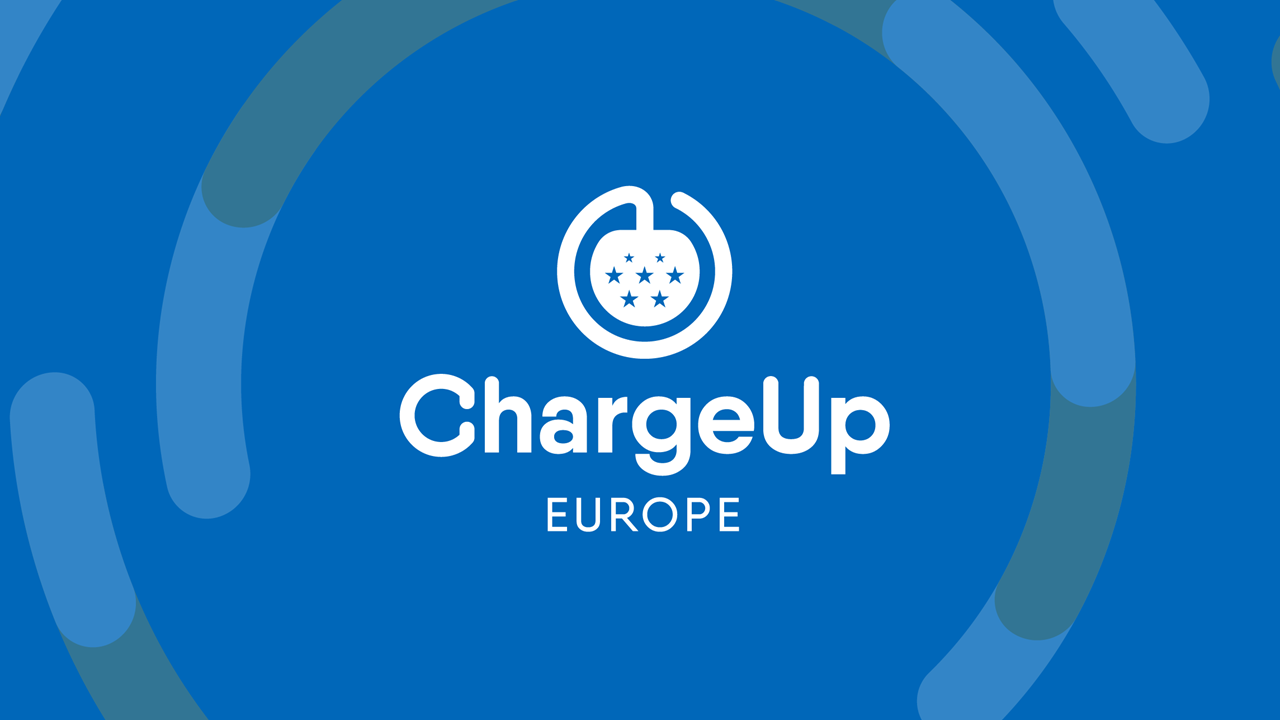 ChargeUp Europe
ChargeUp Europe
 Electrification Coalition
Electrification Coalition
 E.On
E.On
 Enel X
Enel X
 Energías do Portugal
Energías do Portugal
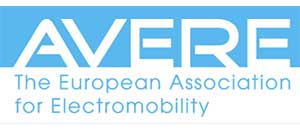 European Association for Electromobility
European Association for Electromobility
 FIA Foundation
FIA Foundation
 Fortum
Fortum
 Global Environment Facility
Global Environment Facility
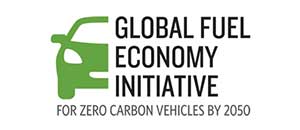 Global Fuel Economy Initiative (GFEI)
Global Fuel Economy Initiative (GFEI)
 GreenWay
GreenWay
 Hewlett Foundation
Hewlett Foundation
 Iberdrola
IEA TCPs on Advanced Fuel Cells and Hybrid and Electric Vehicle Technologies and Programmes
Iberdrola
IEA TCPs on Advanced Fuel Cells and Hybrid and Electric Vehicle Technologies and Programmes
 Industrial Development Organization (UNIDO)
Industrial Development Organization (UNIDO)
 International Council on Clean Transportation
International Council on Clean Transportation
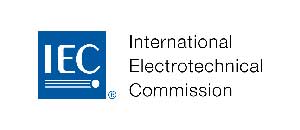 International Electrotechnical Commission
International Electrotechnical Commission
 Lawrence Berkeley National Laboratory
Lawrence Berkeley National Laboratory
 National Renewable Energy Laboratory
National Renewable Energy Laboratory
 National Resource Defence Council
National Resource Defence Council
 Nordic Energy Research
Nordic Energy Research
 Partnership for Sustainable Low-Carbon Transport (SloCaT)
Partnership for Sustainable Low-Carbon Transport (SloCaT)
 Renault-Nissan Mitsubishi Alliance
Renault-Nissan Mitsubishi Alliance
 REN21
REN21
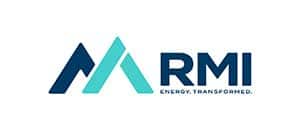 Rocky Mountain Institute
Rocky Mountain Institute
 Schneider Electric
Schneider Electric
 Swedish Energy Agency
Swedish Energy Agency
 The Climate Group
The Climate Group
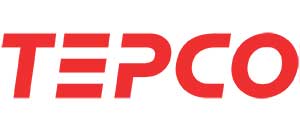 Tokyo Electric Power Company
Tokyo Electric Power Company
 UN-Environment
UN-Environment
 UN-Habitat
UN-Habitat
 Vattenfall
Vattenfall
 World Ressources Institute
World Ressources Institute
 WBCSD
WBCSD
 Urban Foresight
Urban Foresight
